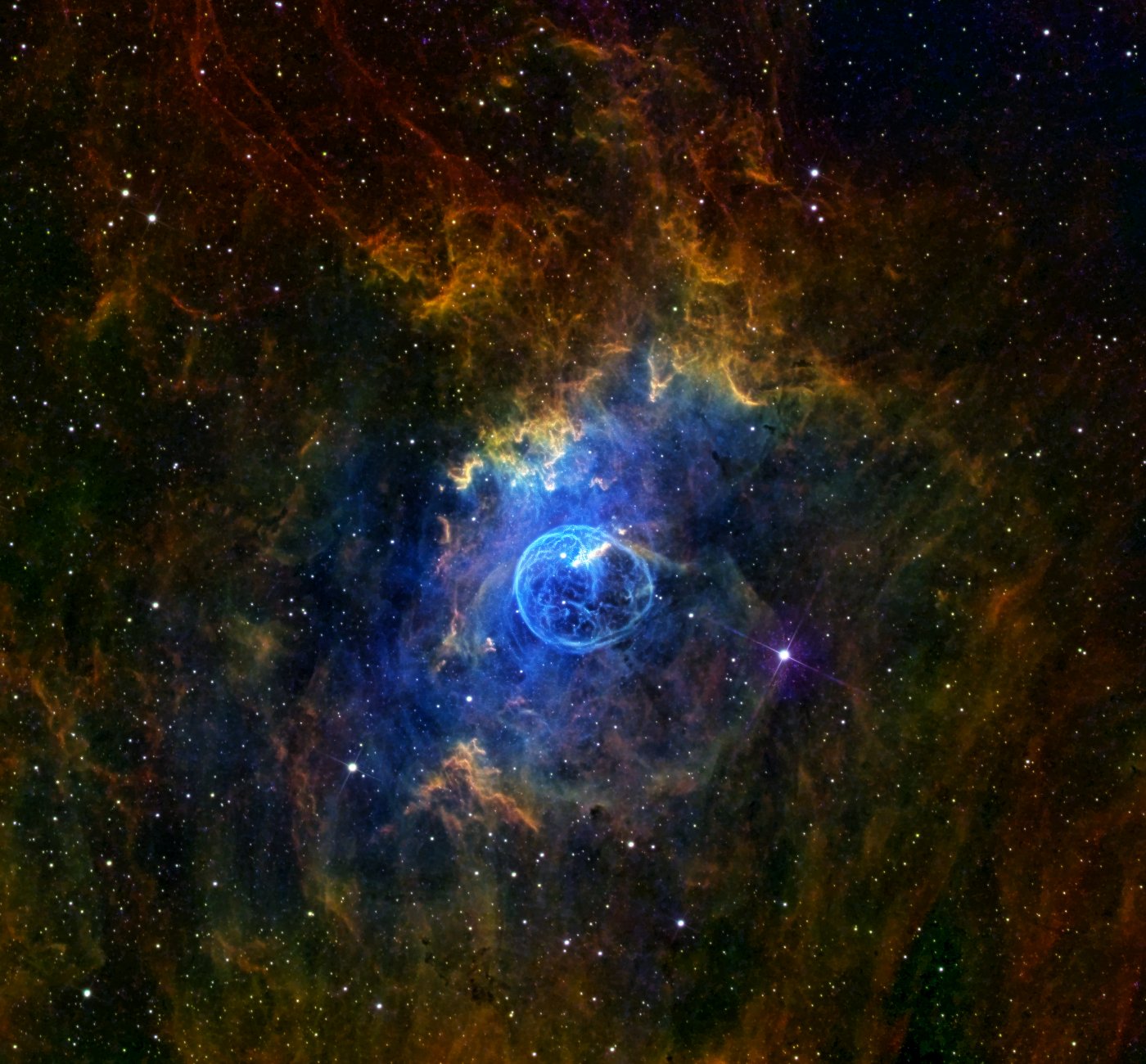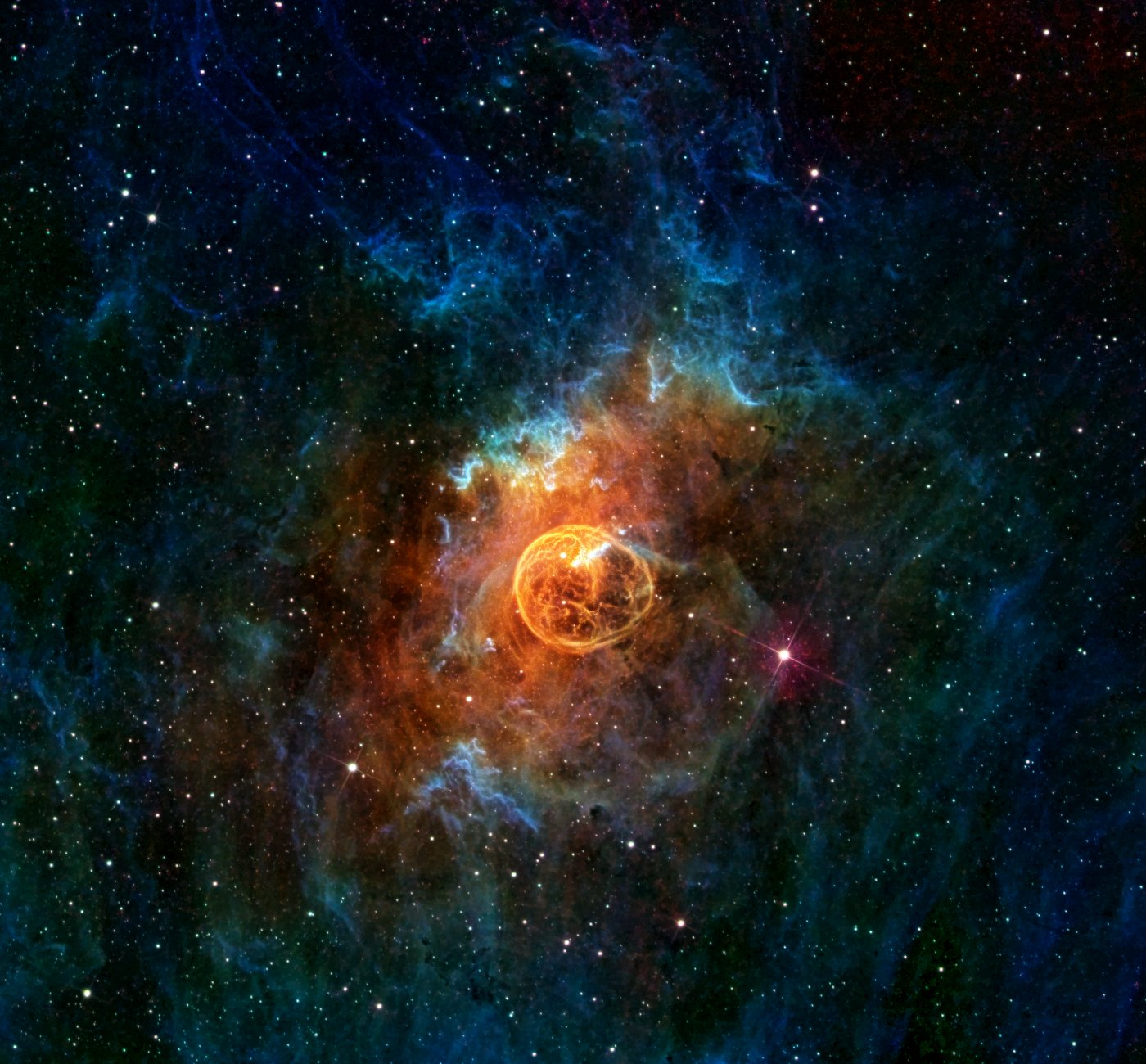SH2-162 (NGC 7635, Bubble Nebula)
SH2-162 (also known as NGC 7635 or Bubble Nebula) is an emission nebula in constellation Cassiopeia. The region is ionized by the hot young O-type star BD +60 2522 which lies at a distance of about 9800 ly (light years) from Earth (Gaia DR3 data). The stellar wind of this star interacts with the matter of a surrounding molecular cloud and forms a bubble. Its apparent diameter is about about 200" (arcseconds), its true diameter is about 9.5 ly. The diameter of the ionized region of the molecular cloud is about 120 ly.
Click on the image to load a full view / full resolution version using a JavaScript viewer.
BD +60 2522, the ionizing star which stellar wind forms the bubble, is the brighter star in the bubble next to the saturated area.


Image data
| FOV: | 0.67° × 0.51° (full view) | ||||||||||
|---|---|---|---|---|---|---|---|---|---|---|---|
| Date: | 2018-2021 | ||||||||||
| Location: | Pulsnitz, Germany | ||||||||||
| Instrument: | 400mm Newton at f=1520mm | ||||||||||
| Camera Sensor: | Panasonic MN34230 | ||||||||||
| Orientation: | North is up (approximately) | ||||||||||
| Scale: | 0.8 arcsec/pixel (at full resolution) | ||||||||||
| Total exposure times: |
|
Image processing
All image processing steps are deterministic, i.e. there was no manual retouching or any other kind of non-reproducible adjustment. The software which was used can be downloaded here.Image processing steps where:
- Bias correction, photon counting
- Dark current subtraction, flatfield correction, noise estimation
- Alignment and brightness calibration using stars from reference image
- Stacking with masking unlikely values and background correction
- Extracting stars from the emission line images using information from continuum images
- Denoising and deconvolution both components (stars and residual)
- RGB-composition
- Dynamic range compression using non-linear high-pass filter
- Tonal curve correction